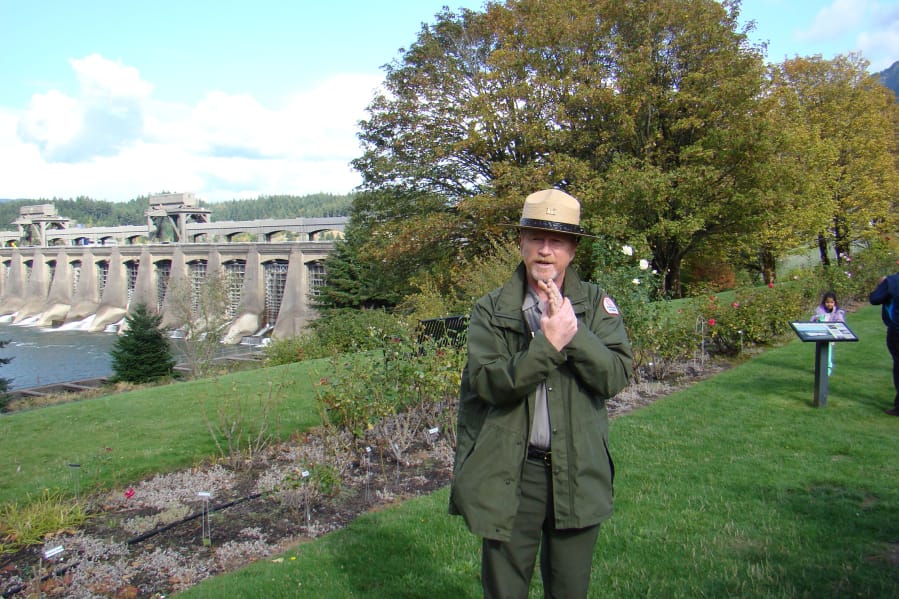It provided paydays through the hardest of America’s hard times. It was part of a system that powered crucial industrial centers during World War II.
That role, by the way, also had some of its workers wondering if they might see enemy bombers heading their way high above the Columbia River.
So in addition to helping keep the local lights on for about 80 years, Bonneville Dam has had a bright history. The dam, and its adjoining facilities, have been a National Historic Landmark since 1987.
Pat Barry shares some of that history in his book, “Bonneville Lock and Dam: A Gift from the People of the Great Depression.”
Barry gave a presentation Saturday at the Fort Vancouver Visitor Center that included highlights from the book.
Before his retirement, the Vancouver resident managed the Bonneville Visitor Center for 27 years. With half a million people coming in each year, it is the most-visited center operated by the Corps of Engineers.
Some of the visitors Barry met actually had worked on the project during the Great Depression.
“I talked with several of them,” the former park ranger said. “It seemed like people were thankful they had a job. People were sleeping in their cars and makeshift tar-paper shacks because there wasn’t enough housing.
“One of the things I heard, they picked up job skills they used for the rest of their lives.
“Almost all the old-timers were fascinated by one piece of equipment, the Bucyrus Monighan drag-line excavator,” Barry added. “The cab on it was the size of a house, with a machine shop. One scoop could fill one of those big dump trucks.”
That piece of equipment was just one way to illustrate the scale of the project.
“At the time, it was audacious. We’re building a dam on the river with the highest flow on the entire west coasts of North and South America,” he said.
Looking for bombers
Barry also met people who worked there during World War II.
“ ‘You’re generating power to produce ships and aircraft.’ That’s a message I had from people who worked there in WWII,” Barry said. “It was a patriotic feeling that they were supporting the war effort.”
Those sentiments were encouraged by a series of posters created by Lloyd Hoff, a Bonneville Power Administration artist.
But that wasn’t the only thing going through the minds of that era’s Bonneville work force.
“There was also concern that they might be a potential target,” Barry said.
“Bonneville was a scary place to work” during the war, Barry wrote. “One man told me they would look to the west occasionally to see if enemy aircraft were coming to bomb the dam.”
Security workers practiced making improvised smoke screens by spilling big pools of diesel fuel on the ground and setting it alight.
About 200 soldiers were stationed at Bonneville to guard the railroad tracks and bridges, he wrote. And a .50 caliber machine gun was mounted inside the main powerhouse, aimed at the front door.
“Bonneville helped win the war,” Barry said.
And in a nod to his book title, he added: “I consider that a gift to the entire world.”




